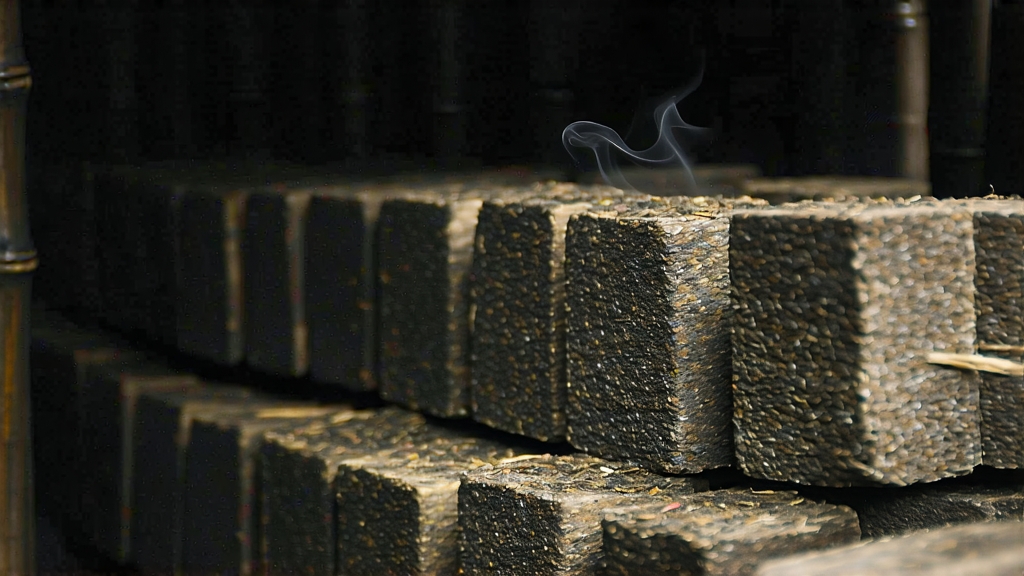
Tucked into the mist-shrouded mountains of southern China’s Guangxi Zhuang Autonomous Region, Liubao cha has spent four centuries perfecting the art of discretion. While Pu-erh has become the global shorthand for dark, post-fermented tea, Liubao—its older cousin—remains a connoisseur’s whisper, traded in bamboo baskets along the same ancient porter paths that once fed the Maritime Silk Road. To understand Liubao is to listen for that whisper: a voice of forest floor, dried longan, and camphor that grows more eloquent with every decade it spends breathing inside a clay jar.
Historical footprints
The earliest written record appears in 1650, when the Qing Ministry of War listed “Liu Bao gong cha” among the six classes of tribute tea reserved for the imperial court. Caravans left the small town of Liubao in Wuzhou prefecture, followed the Liu River eastward, then transferred to bamboo rafts that floated down the Xi Jiang into the Pearl River Delta. From Guangzhou’s Thirteen Factories the tea was loaded onto clipper ships bound for Southeast Asia, where it became the breakfast drink of tin miners in Kuala Lumpur and the secret remedy for “cooling the body” in humid Singapore. In 1886 alone, British customs archives log 1,100 tonnes of “Lew Pow” passing through Hong Kong, a volume that collapsed only when war and revolution closed the mountain passes in the 1940s. When China reopened, Liubao had survived in the memories of Malaysian grandmothers who still poured it from enamel teapots, and in the bamboo-walled storerooms of a few Hong Kong tea merchants who never stopped believing that great tea, like great wine, simply needs time.
Micro-terroirs and leaf styles
Guangxi’s subtropical granite peaks trap monsoon clouds that drop 1,800 mm of rain between April and September. The indigenous Camellia sinensis var. sinensis bushes, often interplanted with cinnamon and camphor trees, develop leaves that are smaller and more resinous than their Yunnan counterparts. Within Liubao county three micro-zones are now recognized: the high-elevation “mist belt” above 600 m where slow growth yields floral notes; the middle valley famous for its orange-peel sweetness; and the lower Liu River banks whose broader leaves supply the classic betel-nut bite. Farmers harvest five flushes a year, but only the spring and autumn pickings are deemed worthy of long aging. The pluck standard is one bud with the first three leaves, called “kai mian” because the surface of the fresh shoot resembles an open face.
Crafting darkness: from sha qing to wet piling
Unlike green tea that seeks to lock freshness, Liubao courts microbial life. The journey begins with a brief pan-fire—sha qing at 160 °C for three minutes—just enough to halt oxidative enzymes while preserving leaf moisture. After rolling, the strips are sun-withered until they feel like soft leather. The critical step is “wo dui”, the Guangxi version of wet piling borrowed from 1970s Pu-erh experiments yet practiced here long before. Leaves are sprayed with mineral-rich spring water, stacked 70 cm high under jute covers, and left to ferment for 45–60 days. Internal piles reach 58 °C; every five days a team “fans” the heap, moving outer leaves to the center to ensure even microbial colonization. The dominant organism is Aspergillus niger, the same fungus that gives soy sauce its umami, but Liubao’s unique twist comes from Candida tropicalis strains native to local camphor bark, imparting a cooling nose that later translates into aged mint. Once the pile loosens and the leaf veins turn walnut-brown, the tea is sun-dried again, then steamed and pressed into three traditional forms: the 500 g “tea melon” threaded with rattan for hanging in river boats, the 40 kg bamboo basket “long lan” still used by Malaysian traders, and the more recent 357 g disc that nods to Pu-erh convenience.
Aging architecture
Fresh Liubao is drinkable but angular; its true personality emerges only after slow oxidation and microbial secondary fermentation. Ideal conditions mimic the storerooms of 1950s Hong Kong: 22–26 °C, 70–75 % relative humidity, and air scented faintly with camphor wood. Bamboo baskets allow vertical airflow, so each year the tea is rotated